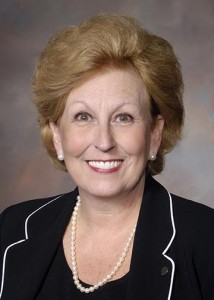Blue Cross Blue Shield of North Carolina expands a website that allows consumers to check the prices charged by physicians; Clinical labs are watching the price transparency trend
Once again, a major health insurer has raised the stakes on transparency of the prices charged by physicians, hospitals, clinical laboratories, and anatomic pathology groups. Blue Cross Blue Shield of North Carolina (BCBSNC) recently expanded a website for its members that lists what the insurer pays to different providers for various clinical services.
The database is searchable. Members have been able to access it since January of 2015. The website lists 1,200 non-emergency procedures, along with the average price that BCBS pays for each one.
Physicians Also Want Price Transparency
Consumers want more transparency of the prices charged by providers. But they are not the only group pushing for it. In a surprising twist, physicians in North Carolina were supportive of having their prices posted on a public website.
Brian Caveney, MD, vice president and senior medical director for BCBSNC, stated in a Modern Healthcare article that, “Physicians desperately wanted it.” Physicians are preparing for value-based contracts, which will reward those physicians whose patients experience better outcomes at lower costs.

Brian Caveney, MD, vice president and senior medical director for BCBSNC stated in the HealthLeaders Media article that cost transparency information may “sting” in the short run, but it can also benefit providers. “We have a bunch of providers in North Carolina who can share in the upside if they can demonstrate savings in total cost of care. The best way for primary care to share upside is to be very careful where they send their patients.” (Caption and photo copyright: HealthLeaders Media.)
Just as medical laboratory managers are closely watching how other organizations and departments are handling the shift toward pricing transparency, so are physicians. Ardis Dee Hoven, MD, is a former president of the American Medical Association (AMA). He said that moving from a fee-for-service payment structure to a value-based compensation (pay for performance) model would be a positive step for physicians.
When Congress first proposed repealing the Medicare Sustainable Growth Rate formula in House Bill H.R. 4015 (SGR Repeal and Medicare Provider Payment Modernization Act of 2014), Hoven told HealthLeaders Media that the outcome would produce “a much better system than what currently is in place.”

Following the passage of the Physician Payment Sunshine Act, a physician reimbursement tracking scheme intended to increase “transparency” in financial arrangements between physicians and pharmaceutical companies, AMA president Ardis Dee Hoven stated, “We strongly urge physicians to make sure all of their financial and conflict of interest disclosures, as well as their information in the national provider identifier (NPI) database, are current and regularly updated.”
Though Complicated, Hospitals Also Approve of Transparency in Pricing
When it comes to transparency in pricing, hospitals face a complex and difficult dilemma. Many hospitals favor transparency, but it is a complicated issue. Hospital laboratory outreach programs that want to post their clinical lab test prices need to comply with the policies of their parent organizations.
The American Hospital Association (AHA) created a toolkit to help hospitals achieve price transparency. The AHA website states that “hospitals and health systems must take a critical look at where they currently fall on the price transparency spectrum and take steps to improve how they communicate pricing information with patients and their community.”
Despite the demand on all sides for transparency in pricing—and even with reports that most physicians are in favor of this payment reform—implementing it is not a clear-cut issue. In an April 2015 article published in Healthcare Finance News, Tawnya Bosko, senior manager at GE Healthcare Camden Group said, “In an ideal world, a hospital charge description master would reflect costs for services and function as information to consumers. Unfortunately, hospital charges are often not associated with actual cost due to the intricacies of the reimbursement structures.”
This is why hospital administrators point out that price transparency is not as simple as creating a list of procedures and the costs for each one. There are complexities in diagnosing and treating each disease and healthcare condition. For example, different patients may require different tests before having the same surgical procedure. And, in addition to the highly individual nature of each episode of care, the entire healthcare system is highly fragmented.
Consumer Demand Ultimately Means Pricing Transparency Will Happen
Although it would be fairly simple for providers to create an invoice with a total cost for a procedure, what consumers actually want is—in advance of treatment—an accurate estimate of what they will be charged by the hospital, the physician, or the clinical laboratory. That price could vary for the same service, depending on whether the patient is insured, uninsured, and whether the provider is in- or out-of-network. Insurance policies differ and organizations are different.
In addition, each provider, including hospitals, physicians, and clinical laboratories, have their own pricing structure. Consumers faced with contacting many different providers are understandably overwhelmed when researching the prices of the clinical care they need.
The trend toward price transparency will continue to grow, despite the complications described above. It is an interesting phenomenon that more physicians are supportive of price transparency because it helps them demonstrate to consumers and health insurers with narrow networks that they are competitive with their prices and quality.
—Dava Stewart
Related Information:
How a North Carolina Insurer Posted What It Pays Providers on the Web
Healthcare Price Transparency: Patients and Payers Versus Providers?
Physicians Brace for Drug, Device ‘Transparency’
Medical Price Transparency Toolkit Unveiled by American Hospital Association
CMS Releases Hospital Price Ranges of 100 Common Treatments
Physicians Push for Say in Value-Based Payments Structure
Hospital Outcomes Transparency Gets New Tools in Washington State
Clinical Pathology Labs Should Plan on Greater Transparency in Test Prices and Patient Outcomes
Innovative California NPR Project Takes on Healthcare Pricing Transparency



